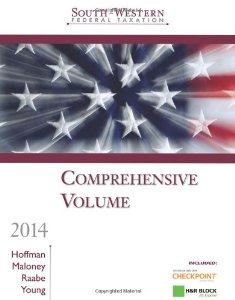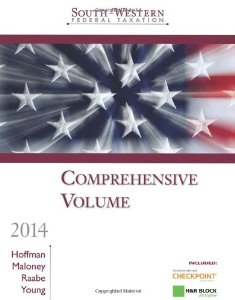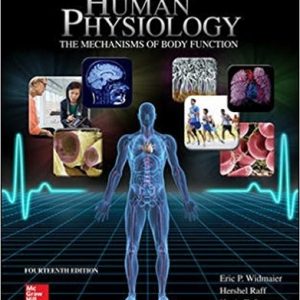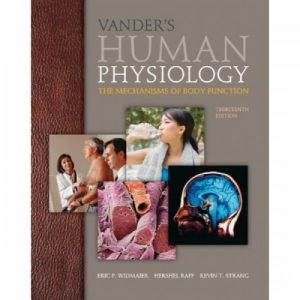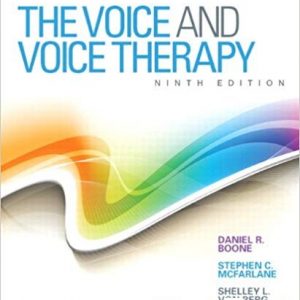Instant download Test Bank for South Western Federal Taxation 2014 Comprehensive Professional Edition 37th Edition William H Hoffman pdf docx epub after payment.
COMPREHENSIVE VOLUME–CHAPTER 2–WORKING WITH THE TAX LAW
Student: ___________________________________________________________________________
1. Rules of tax law do not include Revenue Rulings and Revenue Procedures.
True False
2. A tax professional need not worry about the relative weight of authority within the various tax law sources.
True False
3. In recent years, Congress has been relatively successful in simplifying the Internal Revenue Code.
True False
4. A taxpayer should always minimize his or her tax liability.
True False
5. The first codification of the tax law occurred in 1954.
True False
6. The Code section citation is incorrect: § 212(1).
True False
7. Subchapter D refers to the “Corporate Distributions and Adjustments” section of the Internal Revenue Code.
True False
8. Regulations are generally issued immediately after a statute is enacted.
True False
9. Temporary Regulations are only published in the Internal Revenue Bulletin.
True False
10. Revenue Rulings issued by the National Office of the IRS carry the same legal force and effect as Regulations.
True False
11. A Revenue Ruling is a judicial source of Federal tax law.
True False
12. The following citation can be a correct citation: Rev. Rul. 95-271, I.R.B. No. 54, 18.
True False
13. Revenue Procedures deal with the internal management practices and procedures of the IRS.
True False
14. Post-1984 letter rulings may be substantial authority for purposes of the accuracy-related penalty in § 6662.
True False
15. A letter ruling applies only to the taxpayer who asks for and obtains a letter ruling.
True False
16. The IRS is not required to make a letter ruling public.
True False
17. Determination letters usually involve finalized transactions.
True False
18. Technical Advice Memoranda deal with completed transactions.
True False
19. Technical Advice Memoranda may not be cited as precedents by taxpayers.
True False
20. A taxpayer must pay any tax deficiency assessed by the IRS and sue for a refund to bring suit in the U.S. Court of Federal Claims. Only in the Tax Court can jurisdiction be obtained without first paying the assessed tax deficiency.
True False
21. In a U.S. District Court, a jury can decide both questions of fact and questions of law.
True False
22. Three judges will normally hear each U.S. Tax Court case.
True False
23. A taxpayer can obtain a jury trial in the U.S. Tax Court.
True False
24. A taxpayer must pay any tax deficiency assessed by the IRS and sue for a refund to bring suit in the U.S. District Court.
True False
25. Arizona is in the jurisdiction of the Eighth Circuit Court of Appeals.
True False
26. Texas is in the jurisdiction of the Second Circuit Court of Appeals.
True False
27. The Golsen rule has been overturned by the U.S. Supreme Court.
True False
28. The granting of a Writ of Certiorari indicates that at least four members of the Supreme Court believe that an issue is of sufficient importance to be heard by the full court.
True False
29. The “petitioner” refers to the party against whom a suit is brought.
True False
30. The term “petitioner” is a synonym for “defendant.”
True False
31. The U.S. Tax Court meets most often in Washington, D.C.
True False
32. There are 11 geographic U.S. Circuit Court of Appeals.
True False
33. The following citation is correct: Larry G. Mitchell, 131 T.C. 215 (2008).
True False
34. The IRS issues an acquiescence or nonacquiescence only for regular Tax Court decisions.
True False
35. There is a direct conflict between a Code section adopted in 2008 and a treaty with France (signed in 2012). The Code section controls.
True False
36. The Index to Federal Tax Articles (published by Warren, Gorham, and Lamont) is available in print and electronic formats.
True False
37. A U.S. District Court is the lowest trial court.
True False
38. The research process should begin with a tax service.
True False
39. Electronic databases are most frequently searched by the keyword approach.
True False
40. The test for whether a child qualifies for dependency status is first conducted under the qualified child requirement.
True False
41. A Bluebook opinion is substantial authority for purposes of the accuracy related penalty.
True False
42. The primary purpose of effective tax planning is to reduce or defer the tax in the current tax year.
True False
43. Deferring income to a subsequent year is considered to be tax avoidance.
True False
44. Tax planning usually involves a completed transaction.
True False
45. The Regulation section of the CPA exam is 60% Taxation and 40% Law & Professional Responsibilities.
True False
46. The Internal Revenue Code was first codified in what year?
A. 1913.
B. 1923.
C. 1939.
D. 1954.
E. 1986.
47. Tax bills are handled by which committee in the U.S. House of Representatives?
A. Taxation Committee.
B. Ways and Means Committee.
C. Finance Committee.
D. Budget Committee.
E. None of the above.
48. Federal tax legislation generally originates in what body?
A. Internal Revenue Service.
B. Senate Finance Committee.
C. House Ways and Means Committee.
D. Senate Floor.
E. None of the above.
49. Subtitle A of the Internal Revenue Code covers which of the following taxes?
A. Income taxes.
B. Estate and gift taxes.
C. Excise taxes.
D. Employment taxes.
E. All of the above.
50. In § 212(1), the number (1) stands for the:
A. Section number.
B. Subsection number.
C. Paragraph designation.
D. Subparagraph designation.
E. None of the above.
51. Which of these is not a correct citation to the Internal Revenue Code?
A. Section 211.
B. Section 1222(1).
C. Section 2(a)(1)(A).
D. Section 280B.
E. All of above are correct cites.
52. Which of the following is not an administrative source of tax law?
A. Field Service Advice.
B. Revenue Procedure.
C. Technical Advice Memoranda.
D. General Counsel Memorandum.
E. All of the above are administrative sources.
53. Which of the following sources has the highest tax validity?
A. Revenue Ruling.
B. Revenue Procedure.
C. Regulations.
D. Internal Revenue Code section.
E. None of the above.
54. Which of the following types of Regulations has the highest tax validity?
A. Temporary.
B. Legislative.
C. Interpretive.
D. Procedural.
E. None of the above.
55. Which statement is not true with respect to a Regulation that interprets the tax law?
A. Issued by the U.S. Congress.
B. Issued by the U.S. Treasury Department.
C. Designed to provide an interpretation of the tax law.
D. Carries more legal force than a Revenue Ruling.
E. All of the above statements are true.
56. In addressing the importance of a Regulation, an IRS agent must:
A. Give equal weight to the Code and the Regulations.
B. Give more weight to the Code rather than to a Regulation.
C. Give more weight to the Regulation rather than to the Code.
D. Give less weight to the Code rather than to a Regulation.
E. None of the above.
57. Which item may not be cited as a precedent?
A. Regulations.
B. Temporary Regulations.
C. Technical Advice Memoranda.
D. U.S. District Court decision.
E. None of the above.
58. What statement is not true with respect to Temporary Regulations?
A. May not be cited as precedent.
B. Issued as Proposed Regulations.
C. Automatically expire within three years after the date of issuance.
D. Found in the Federal Register.
E. All of the above statements are true.
59. What administrative release deals with a proposed transaction rather than a completed transaction?
A. Letter Ruling.
B. Technical Advice Memorandum.
C. Determination Letter.
D. Field Service Advice.
E. None of the above.
60. Which of the following indicates that a decision has precedential value for future cases?
A. Stare decisis.
B. Golsen doctrine.
C. En banc.
D. Reenactment doctrine.
E. None of the above.
61. A taxpayer who loses in a U.S. District Court may appeal directly to the:
A. U.S. Supreme Court.
B. U.S. Tax Court.
C. U.S. Court of Federal Claims.
D. U.S. Circuit Court of Appeals.
E. All of the above.
62. If a taxpayer decides not to pay a tax deficiency, he or she must go to which court?
A. Appropriate U.S. Circuit Court of Appeals.
B. U.S. District Court.
C. U.S. Tax Court.
D. U.S. Court of Federal Claims.
E. None of the above.
63. A jury trial is available in the following trial court:
A. U.S. Tax Court.
B. U.S. Court of Federal Claims.
C. U.S. District Court.
D. U.S. Circuit Court of Appeals.
E. None of the above.
64. A taxpayer may not appeal a case from which court:
A. U.S. District Court.
B. U.S. Circuit Court of Appeals.
C. U.S. Court of Federal Claims.
D. Small Case Division of the U.S. Tax Court.
E. None of the above.
65. The IRS will not acquiesce to the following tax decisions:
A. U.S. District Court.
B. U.S. Tax Court.
C. U.S. Court of Federal Claims.
D. Small Case Division of the U.S. Tax Court.
E. All of the above.

